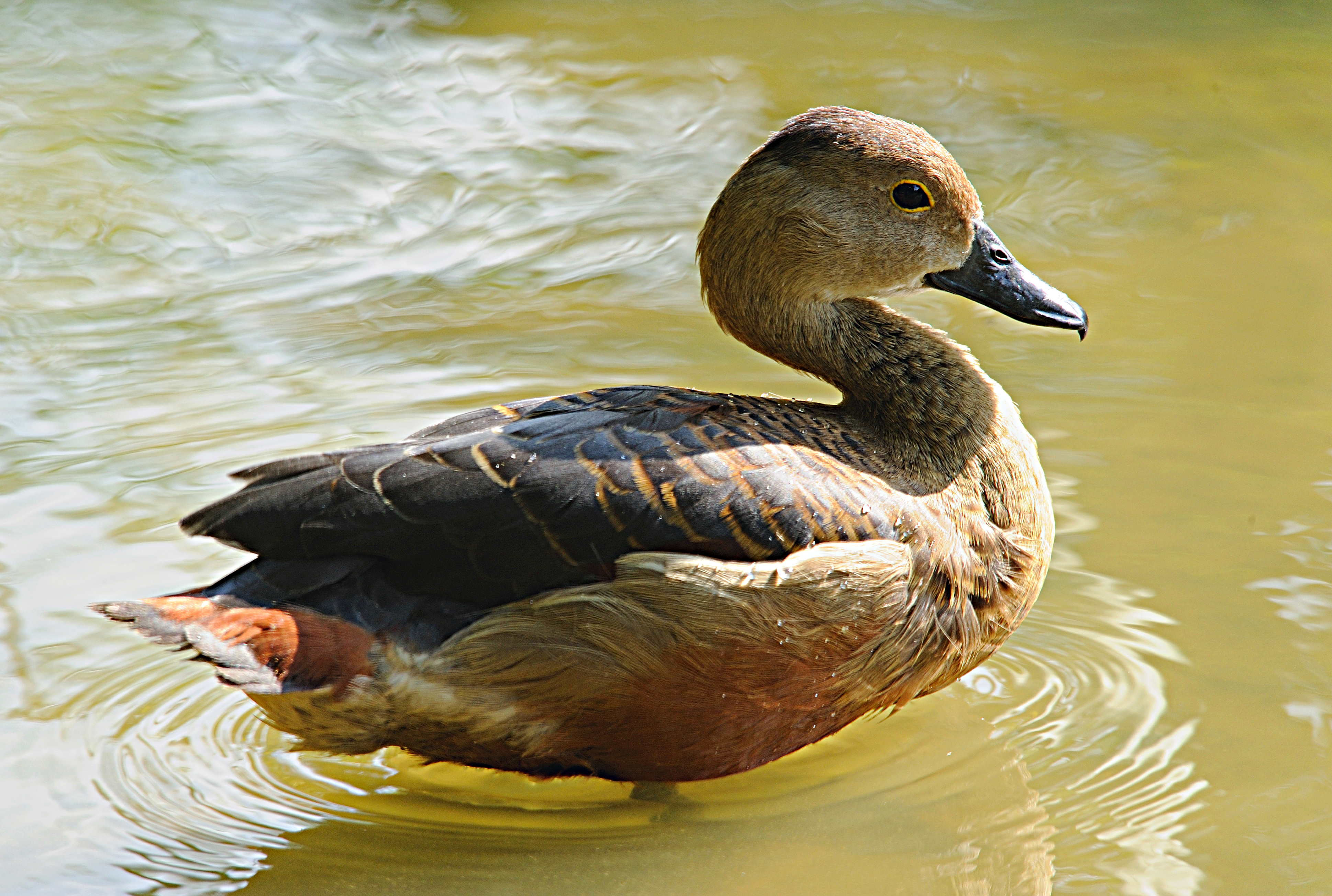Lesser Whistling Duck, scientific name Dendrocygna javanica is a species of bird within the Anatidae family in the Indian subcontinent and Southeast Asia.
Lesser Whistling Duck profile
The lesser whistling duck (Dendrocygna javanica), also referred to as Indian whistling duck or lesser whistling teal, is a species of whistling duck that breeds within the Indian subcontinent and Southeast Asia.
They are nocturnal feeders that through the day could also be present in flocks around lakes and moist paddy fields. They can perch on bushes and typically construct their nest within the hole of a tree.
This brown and long-necked duck has broad wings which are seen in flight and produce a loud two-note wheezy call. It has a chestnut rump, differentiating it from its bigger relative, the fulvous whistling duck, which has a creamy white rump.
With a large distribution range between 1 and 10 million km², they’re thought of to have a safe international population of between two and twenty million people.
They are usually not threatened by searching as they aren’t thought of good to eat. Hunters in Assam nonetheless have been recognized to lift the ducklings to function live decoy.
Distribution and habitat
This is a largely resident species distributed extensively throughout lowland wetlands of the Indian subcontinent and Southeast Asia. The species additionally happen on islands within the area together with the Andamans, Nicobars, and Maldives.
They typically make native actions in response to climate and adjustments in water availability and the more northern birds winter additional south.
They are present in freshwater wetlands with good vegetation cover and sometimes relaxation through the day on the banks and even on the open sea in coastal areas.
Downy chicks are black with a white eyebrow and white patches on the back of the head, the wing, lower back, and rump. Albino people have been seen within the wild.
Large numbers are typically present in city wetlands comparable to in Kolkata and Goa, significantly throughout winter. In the Alipore Zoological Gardens, captive people have been launched within the Nineteen Thirties and wild birds joined this nucleus subsequently.
Lesser Whistling Duck Description
This chestnut brown duck is confusable solely with the fulvous whistling duck (D. bicolor) however has chestnut upper-tail coverts in contrast to the creamy white within the latter.
The ring around the attention is orange to yellow. When flying straight, their head is held below the level of the body as in different Dendrocygna species.
The crown seems darkish and the sexes are alike in plumage. They fly slowly however with fast wing-flapping and often produce a repetitive wheezy seasick call as they circle overhead.
They are very nocturnal and sometimes relaxed throughout the day. The outermost main feather has the inside vane modified. They produce very distinguished whistling sound whereas flying.
Diet
Lesser whistling duck is often gregarious. They feed primarily on crops taken from the water in addition to grains from cultivated rice other than small fish, frogs, and invertebrates comparable to mollusks and worms. They dabble in addition to dive in the water.
Behavior
They will usually waddle on the land and Common mynas have been famous to comply with them on grass. Courtship includes the male going through the feminine and dipping and elevating its bill within the water and swimming around the feminine.
Lesser Whistling Duck Breeding
They breed through the monsoon or wet season and should range domestically in relation to meal availability. The nest site could also be a tree hole lined with twigs and grass or constructed within the fork of a big tree, typically reusing an old nest of a kite or heron and even on the ground. The clutch varies from 7 to 12 white eggs which are incubated by each of the parents. Large clutches of as much as 17 have been famous though these could also be indications of intraspecific brood parasitism. The eggs hatch after about 22–24 days. More than one brood could also be raised in a single season. Young birds could typically be carried on the back of the parents.
More Interesting Articles
- Black Legged Kittiwake – Facts| Juvenile | Range| Flight
- Pigeon Guillemot – Facts | Juvenile | Migration | Range
- Pelagic Cormorant – Facts | Range | Migration | Ecology
- Tufted Puffin – Diet | Habitat | Lifespan | Adaptations
- Horned Puffin – Size | Facts | Habitat | Diet | Sound
- Atlantic Puffin – Facts, Size, Habitat, Nesting, Breeding
- Spix’s macaw – Facts | Size | Habitat | Lifespan | Population
- Black-throated Sparrow – Songs | Range | Facts | Juvenile
- Hyacinth Macaw Profile, Traits, Facts, Care, Breeding
- American Coot – Foot | Baby | Duck | Juvenile | Egg | Habitat
- Canada Goose bird Facts, Traits and Symbols
- African Grey Parrot Lifespan – What you need to know
- Spix Macaw Extinct – Is Spix Macaw on brink of extinction?
- Laysan Albatross – Lifespan and Wisdom
- Amazon Parrot Lifespan – Factors that affect Longevity
- Birds of the Mojave Desert
- Cactus wren Bird Profile, Traits, Diet, Care, Facts
- Kakapo Parrot – Flightless Parrot from New Zealand
- American Avocet Bird – Facts | Range | Habitat
- Black Winged Stilt Profile | Traits | Care | Information





